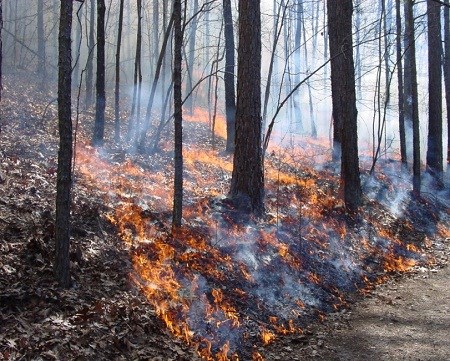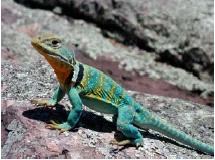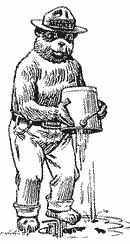
NPS Photo In the last 100 years, as settlers moved into the region, fires were not allowed to burn. These new settlers saw fire not a a natural process, but instead as a threat to their lives and property. Thousands of years of regular fires came to an end. As a result, openings and grassy spaces disappeared. The once open woodland areas became dense forests. Plants and animals, such as the collared lizard, that thrived in those spaces began to disappear. Park scientists took note of the changes in the ecosystem. They observed how removing fire affected the woodlands. As a result, they suggested that fires should be allowed to burn in those fire-adapted areas. 
NPS Photo Bringing fire back into the ecosystem allows natural cycles to take place. This reduces the unnatural buildup of leaf litter and other burnable material. The risk of an unplanned and possible catastrophic wildfire goes down as well. Our Fire Staff Buffalo National River employs a dedicated staff of full-time, seasonal, and collateral-duty wildland firefighters. Our firefighters protect the park's natural resources from wildfires. The Buffalo River Wildland Fire Module is a fire crew that travels to national parks in Arkansas and across the country to manage fires when needed. Additionally, the module balances the park's needs with the needs of other agencies. This cooperation supports other land management agencies including,
The hardworking men and women in the park's fire program are key to keeping our forests healthy and protected. 
USFS Remember Smokey Bear's ABCs: Always Be Careful with Fire Fire has many uses. Smokey wants you to be responsible when using fire. Smokey never wants you to play with matches, leave fires unattended, or throw lighted cigarettes away. With your help, we can use fire safely at Buffalo National River. Keep the following the safety tips in mind when building a campfire:
Learn More About Wildland Fire in Arkansas |
Last updated: April 25, 2024
